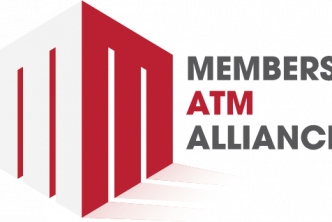Providing value and awareness to more members increases results
Emerging from the impact of the Coronavirus pandemic, credit unions are focused on how to recover revenue lost to a decline in transaction volume and non-interest income sources. But as consumers remain cost-sensitive and competition from fintechs increases, the short-term impact of raising service fees can damage member relationships and threaten long-term recovery.
By: Mark Roe, Executive Vice President of National Sales
Economic conditions are continuing to improve, fueling positive expectations for a robust recovery from the effects of COVID-19. However, there continues to be concern from many community credit unions about how to maintain robust revenue levels. With interest rates expected to remain low for the foreseeable future and fewer non-interest income sources available, the temptation is there to rely on increasing fees to grow the bottom line. For some, this practice has become the norm.
Take the long view when setting overdraft fees
While raising overdraft fees may initially lead to additional revenue, this type of return can be difficult to sustain. Industry experts, such as JMFA analysts, have been tracking the impact of raising fees for two decades, and it has shown a profound negative impact on usage and total revenue generation.
Decreased usage also can result when your members don’t have a complete understanding of how your overdraft service can help them avoid late payments on loans or credit card balances. This is especially true given that penalty fees can negatively impact their credit.
In contrast, we have observed that maintaining a fully transparent program with a reasonable fee will earn a higher percentage of non-interest income. When more members are aware of the program benefits and know how to use it responsibly, it becomes a reliable solution for occasional financial shortfalls.
Keep consumer reaction to price increases in mind
Consumers have more options today when faced with price increases or unsatisfactory service—such as streaming media as an alternative to paying for more expensive cable television providers, switching to mileage-friendly hybrid cars to avoid volatile gasoline prices or accessing news from free, online sources due to escalating costs of newspaper subscriptions.
Likewise, an increase in the availability of online, no-fee banking services offers them more choices when it comes to avoiding excessive fees for covering occasional overdrafts. As a result, the combination of increased fees and shrinking member use can lead to reduced overdraft income opportunities for your credit union.
On the other hand, offering a reasonably priced, transparent overdraft solution—with reasonable fees and clear disclosures about the cost and terms of usage—can strengthen income and solidify long-term service satisfaction when more members are eligible for its use.
Overcome the impact of the pandemic with a proven, reasonably priced overdraft strategy
The economic slowdown and stay-at-home orders that resulted from COVID-19 last year have impacted overdraft transaction volume overall. However, maintaining proactive management of your overdraft program and consumer-focused service should remain a priority.
The right overdraft program partner can assist with pricing and ensure you have processes and procedures in place that are compliant and consumer friendly. This level of support and attention to detail will prepare your credit union for the post-pandemic recovery with a reliable source of revenue.
ABOUT JMFA
JMFA is one of the most trusted names in the industry. Whether it’s recovering lost revenue, uncovering new savings with vendor contract negotiations, creating more value, serving members better or delivering a 100% compliant overdraft service—JMFA can help you deliver measurable results with proven solutions. To learn more, please contact your local representative or call us at (800) 809-2307.
# # #






